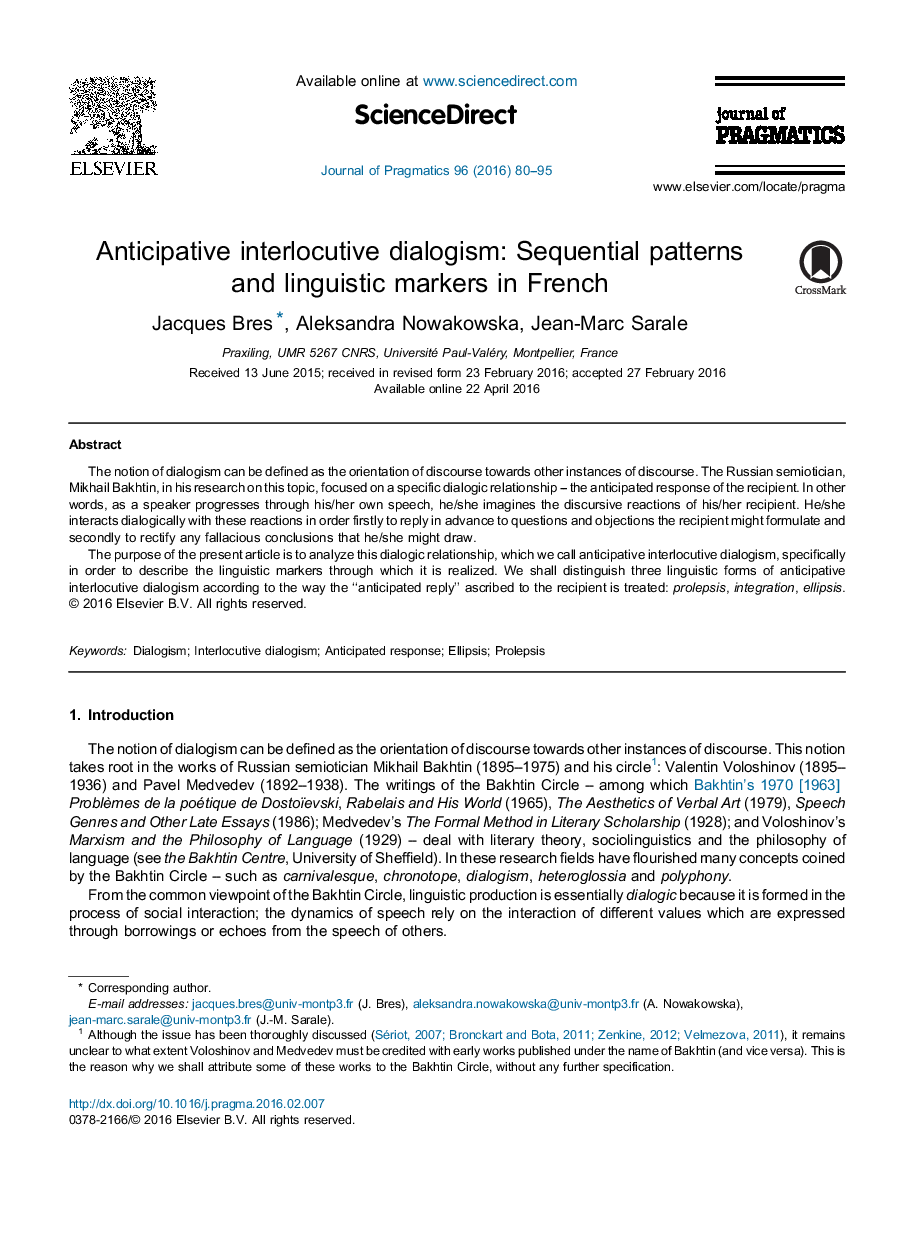| Article ID | Journal | Published Year | Pages | File Type |
|---|---|---|---|---|
| 932475 | Journal of Pragmatics | 2016 | 16 Pages |
•Among many types of dialogism, we define Anticipative Interlocutive Dialogism (AID).•In AID, the speaker keeps on dialogically anticipating his/her recipient's reply.•We establish a sequential pattern of AID; it relies on three elements: [x], [y], [z].•We distinguish and analyze three types of AID: prolepsis, integration and ellipsis.•The way element [y] is treated makes the difference between these three types of AID.
The notion of dialogism can be defined as the orientation of discourse towards other instances of discourse. The Russian semiotician, Mikhail Bakhtin, in his research on this topic, focused on a specific dialogic relationship – the anticipated response of the recipient. In other words, as a speaker progresses through his/her own speech, he/she imagines the discursive reactions of his/her recipient. He/she interacts dialogically with these reactions in order firstly to reply in advance to questions and objections the recipient might formulate and secondly to rectify any fallacious conclusions that he/she might draw.The purpose of the present article is to analyze this dialogic relationship, which we call anticipative interlocutive dialogism, specifically in order to describe the linguistic markers through which it is realized. We shall distinguish three linguistic forms of anticipative interlocutive dialogism according to the way the “anticipated reply” ascribed to the recipient is treated: prolepsis, integration, ellipsis.
